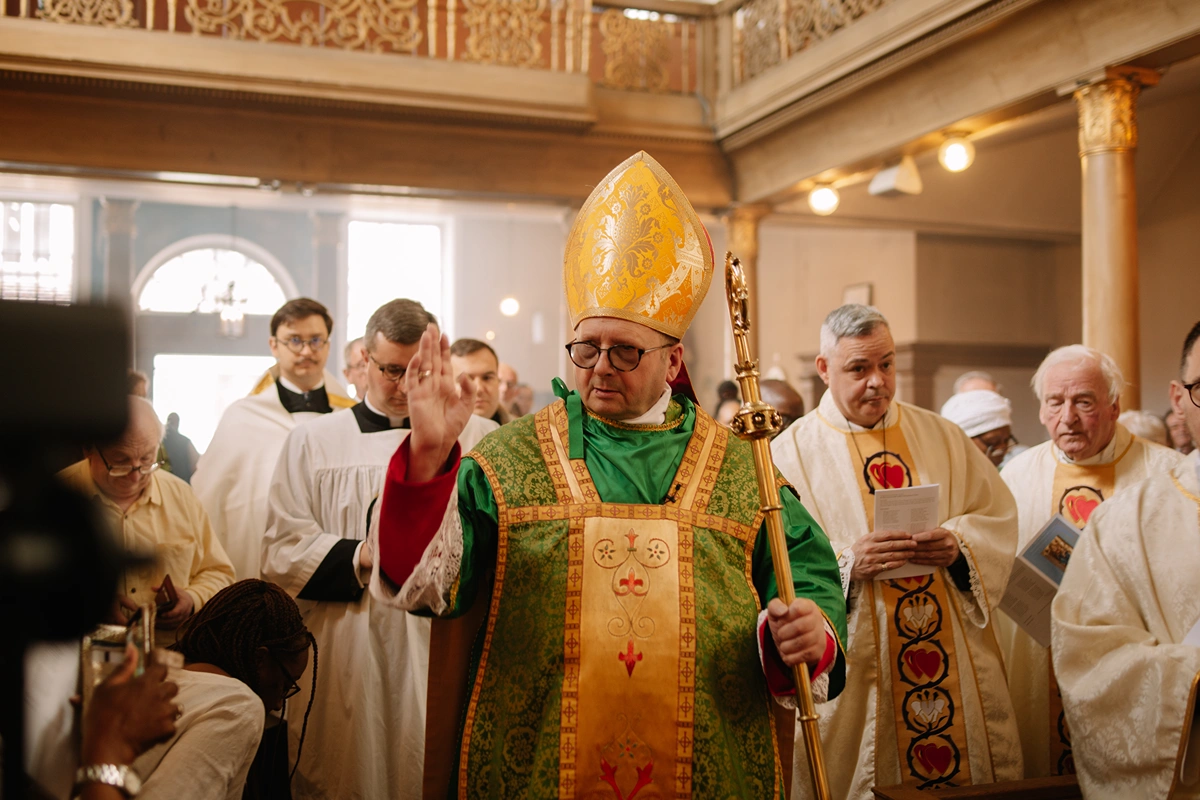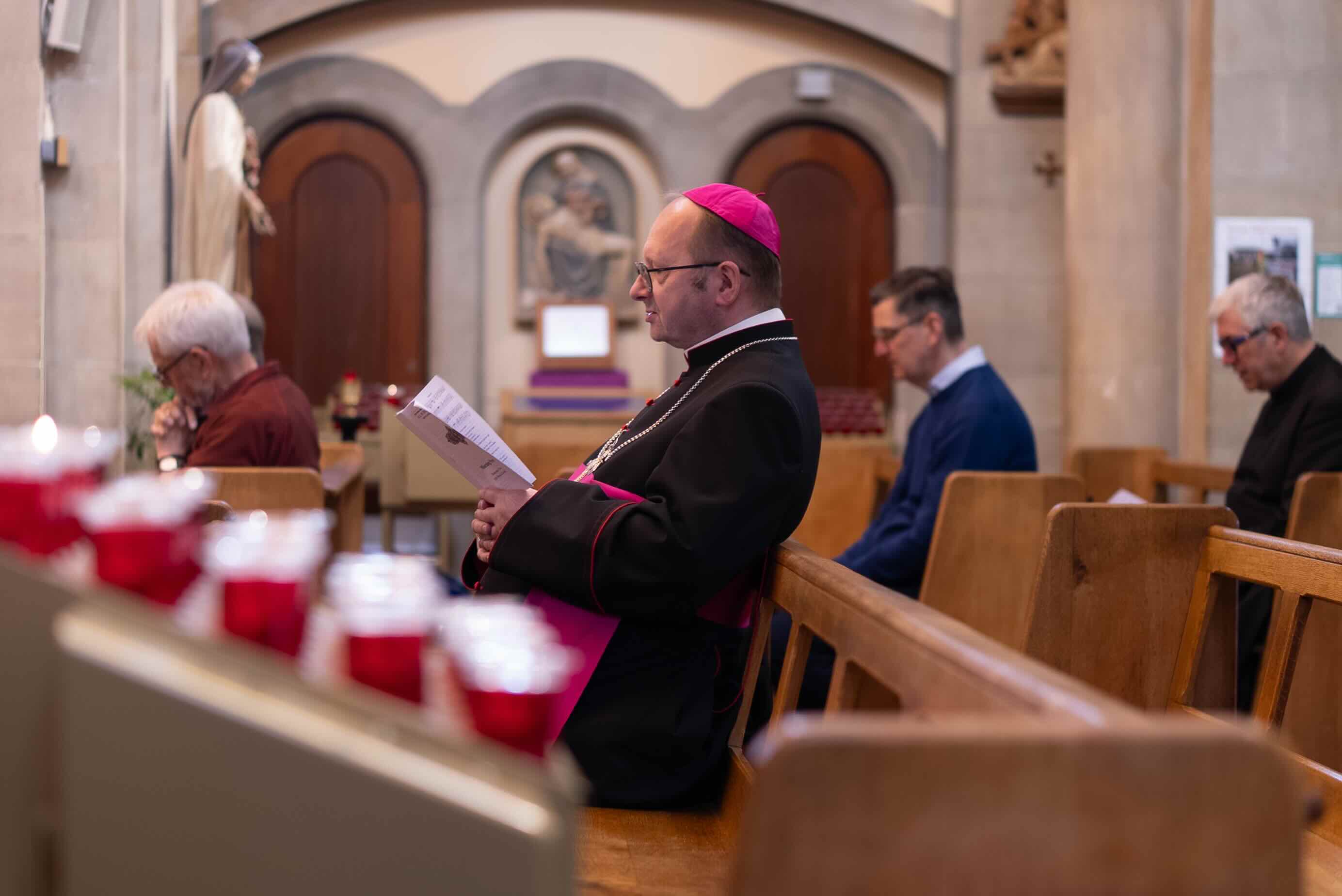October 9, 2025
By
Fr Peter Conley


Newman describes how a childhood hand sketch on the cover of his school Latin verse book “almost took my breath away.” He realized, with pleasing astonishment, how far back the roots of his Marian spirituality stretched as he gazed at the pencil drawing of “a set of beads suspended with a little cross attached.” While Newman was unsure why he had produced this art work, it was poignant reminder to him of the ‘trace of Providence’. A few days before the 34th Anniversary of his reception into the Catholic Church, preaching to the boys at Oscott, on the Feast of the Holy Rosary, 5th October 1879, Newman reflects deeply upon how devotion to the Blessed Virgin Mary had shaped his journey of faith, hope and love: “Now the great power of the Rosary lies in this, that it makes the creed into a prayer” giving us the great truths of God’s “life and death to meditate upon, and brings them nearer to our hearts.” And so, “Our thoughts of Him are mingled thoughts of His Mother, and in the relations between Mother and Son we have set before us the Holy Family, the home in which God lived.” (Sayings of Cardinal Newman). Although not every convert felt as Newman did, they found him to be understanding of their position and pastorally astute in his advice.

Writing to George Ryder, when living in Maryvale, a few years after his own conversion on 19th September, 1848, Newman recommends that he use his imagination to visualize each Gospel passage the Rosary Mysteries recall. As well as recommending that Ryder focuses on the words of the Our Father and Hail Mary not in themselves, but rather as a kind of ‘mantra’, whereby the exact recitation embeds the grace being imparted by the contemplation of individual scriptural scenes being recalled:
I certainly think you should get into the Catholic ways of devotion by degrees. Perhaps you would feel the Rosary less trying, said with others. Certainly it would be better if you fixed a time for saying it, and kept to it. How do you say it? Try it thus, if you don’t so use it at present, but perhaps you do; viz before each mystery, set before you a picture of it, and fix your mind upon that picture, (e.g. the Annunciation, the Agony, etc.) while you say the Pater and 10 Aves, not thinking of the words, only saying them correctly. Let the exercise be hardly more than a meditation. Perhaps this will overcome any sense of tedium.” (Letters and Diaries XII, p.263).
Newman, after his eyesight was failing, was given permission by Bishop Ullathorne to substitute saying the Divine Office for meditating upon the story of salvation communicated by the recitation of the Rosary. By so doing he placed himself in the care of Mary, who inspired him to make her ‘let it be’ according to God’s will, more deeply his own. Writing some years earlier in 1878 to Mrs Bellais, Newman’s words reveal the fruits of his devotion to the Lord of all hopefulness, Lord of all Joy:
However, there is One above who reads your heart as no one on earth reads it, who will supply all its needs, and can and will do more for those, whose future is so anxious to you, than could have been done for them, had every thing happened as you wish. So do not be cast down, but put your trust in God, and be sure that every thing that happens in the best way for those who love Him. (Letters and Diaries, XXII, p.247).


